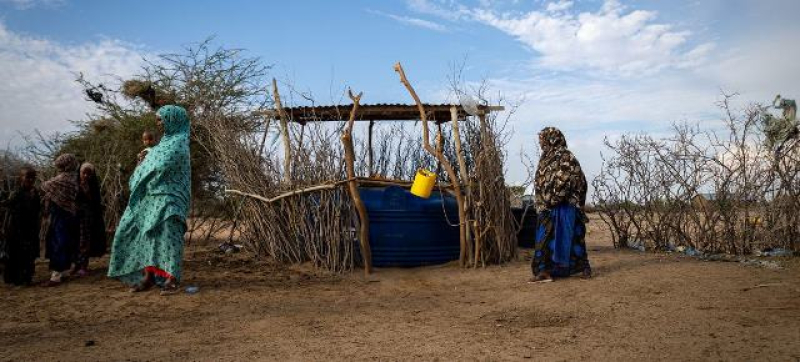- High-level meeting reviews country’s economic progress |
- Dhaka suspends visa, consular services at its Delhi, Agartala Missions |
- Govt to cut savings certificate profit rates from January |
- Gold prices hit fresh record in Bangladesh within 24 hours |
- Election to be held on time, Prof Yunus tells US Special Envoy |
2023 likely hottest year on record; El Niño may add to this

Communities in Maalimin, in northern Kenya are experiencing drought conditions. © UNEP - Nayim Ahmed Yussuf
8 November 2023 - 2023 is “almost certain to be the warmest year on record” after October smashed temperature highs, while the mercury will keep rising as the warming El Niño effect continues well into next year.
That’s the message from UN World Meteorological Organization (WMO), which said on Wednesday that for the calendar year to date, the global mean temperature is the highest ever recorded, 1.43 degrees Celsius above pre-industrial levels, and sea ice in the Antarctic remains at record low levels.
WMO expects the warming El Niño climate pattern to last at least until April 2024, contributing to a further spike in temperatures.
Head of WMO, Petteri Taalas, said that as El Niño’s impacts on global temperature typically play out in the year after its development, next year “may be even warmer”.
Fuel on the fire
While El Niño occurs naturally, it takes place in the context of climate change fuelled by “increasing concentrations of heat-trapping greenhouse gases from human activities,” Prof. Taalas stressed.
He warned that extreme weather events such as heatwaves, drought, wildfires, heavy rain and floods will be worse in some regions.
“That is why WMO is committed to the Early Warnings For All initiative to save lives and minimize economic losses,” he added.
The previous warmest year on record was 2016 due to a “double whammy” of an exceptionally strong El Niño and climate change.
El Niño is created by warm waters coming to the surface which are then released as extra heat into the atmosphere.
Since May this year, monthly average sea surface temperature anomalies in the central-eastern equatorial Pacific have warmed significantly, rising from about 0.5 °C above average to around 1.5 °C above average in September, WMO said.
These estimates are relative to the 1991-2020 baseline period, using the latest version of the Optimum Interpolation Sea Surface Temperature (OISST) dataset.
The most recent expert forecasts suggest a high likelihood of continued warming in the Pacific for at least the next four overlapping three-month seasons, through to February-April 2024.
A strong El Niño does not necessarily mean strong El Niño impacts locally, the UN agency stresses.
“It is important to note that El Niño is not the only factor that drives global and regional climate patterns, and that the magnitudes of El Niño indicators do not directly correspond to the magnitudes of their effects. No two El Niño events are alike.”
Warmest October by far
It was by far the warmest October on record, 0.85°C above the 1991-2020 average, and 0.40°C above the previous warmest October. The global temperature anomaly was the second highest across all months in the ERA5 dataset, behind September 2023, it said.
October marked the sixth consecutive month that Antarctic sea ice extent remained at record low levels for the time of year, with a monthly value 11 per cent below average. Arctic sea ice extent reached its 7th lowest value for October, at 12 per cent below average.
El Niño conditions continued to develop in the equatorial Pacific, although anomalies remain lower than those reached at this time of year during the development of the historically strong 1997 and 2015 events.
In October 2023, overall precipitation was above average across most of Europe, said WMO. Storm Babet hit northern Europe, and storm Aline impacted Portugal and Spain, bringing heavy rain and flooding. – UN News

